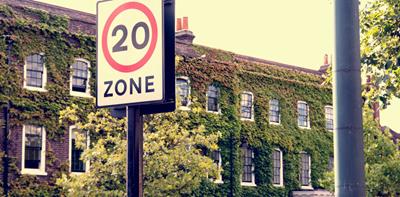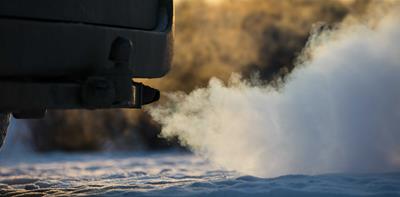
In recent years, concerns about air quality and the environmental impact of cars in built up areas have led to Low Emission Zones (LEZs) or ‘Clean Air Zones’ in various cities around the UK. These zones aim to reduce the levels of harmful pollutants, improving air quality and public health.
In this article, we'll break down what low emissions mean and how to know if you need to pay low emission zone charges.
EASY AS HACK
If you’re planning to drive in a city with a low emission zone, do your research to understand where the LEZ starts and ends. You might be able to save on charges by parking a little way out and taking public transport into the city centre.
At a glance
- Low emission zones or clean air zones mean drivers with cars that don’t meet emissions standards may have to pay a daily charge
- Daily charges depend on the type of car you have, and its emission standard
- Pay low emission zone charges before you travel to save getting a fine
- Use the government’s clean air zone checker to find out whether your vehicle will be charged
What is a low emission zone?
Low emission zones or clean air zones are areas where certain vehicles are restricted from entering as a way to improve air quality. Low emission zones are typically set up in cities and other urban areas where air pollution is a problem.
Low emissions zones work in one of two ways:
- Charging entry: In these areas, vehicles that do not meet certain emission standards are required to pay a daily charge to enter the zone.
- Permits: In a permitted low emission zone, you’ll only be able to enter if your car has been given a permit.
The charging system is the most common way to enforce clean air zones in the UK, with the daily charge typically based on the type of vehicle you’re driving and the emission standards it meets.
For example, in London, the daily charge for a car that does not meet emissions standards is £12.50.
What is the ultra low emission zone (ULEZ)?
The ultra low emission zone (ULEZ) is London’s stricter version of a low emission zone. In the ULEZ, the following Euro standards apply [1]:
- Euro 4 for petrol cars, vans and minibuses
- Euro 6 for diesel cars, vans and minibuses
- Euro 3 for motorcycles and mopeds
The ULEZ was introduced in the capital in April 2019 and has since been expanded to include areas of Greater London.
Find out more about London’s ultra low emission zone on the TfL website.
Where are low emission zones?
There are low emission zones in a number of cities around the world, including Paris, Berlin, and Milan. In the UK and in addition to London’s ULEZ, there are clean emission zones in Bath, Birmingham, Bradford, Bristol, Portsmouth, Sheffield, and Tyneside (Newcastle and Gateshead) [2].
The specific boundaries of low emissions zones can vary, so it's a good idea to look up where they are if you plan to drive to an affected city.
Maps and information about LEZs can usually be found on city government websites or navigation apps. The start of clean air zones should also be clearly signposted before you enter the LEZ area.
How to pay low emission zone charges
If your vehicle doesn't meet the emission standards required for a particular zone, you'll need to pay a daily charge to drive in that zone. These charges are meant to incentivise cleaner vehicle choices and fund efforts to improve air quality.
Payment methods vary by city, though you can usually pay low emission zone fees online or through city apps. Some cities even have automatic payment systems set up for residents to make life easier.
Make sure you look up how to pay low emission zone fees in the city you’re driving through before you travel, as some cities require you to pay before you enter the low emission zone to avoid extra fees.
The government's handy clean air zone checker lets you know which clean air zones you can and can’t drive it.
Find the clean air zone checker here.
What happens if you drive in a clean air zone without paying?
If you drive in a low emission zone without paying the charge, you may be issued a penalty charge notice (PCN). Many cities use camera systems to monitor vehicles entering LEZs, and if your vehicle doesn't meet the emission standards and you haven't paid the fee, you will receive a PCN in the post.
The amount you’re charged will vary depending on the zone and the type of vehicle you are driving but can be fairly hefty. That’s why it’s always best to pay the charges before you travel.
Which cars are exempt from low emission charges?
Certain vehicles are exempt from low emission charges, usually those that produce little to no harmful emissions. Electric vehicles (EVs) and hybrids are often exempt, as they run on electricity and produce significantly fewer pollutants than traditional petrol or diesel vehicles. Some cities also offer exemptions or discounts for residents, encouraging them to choose cleaner transportation options.
Exemptions can vary depending on the city, so it’s a good idea to check the specific regulations of the low emission zone you plan to visit.
These are the most fuel-efficient cars on the market.

Shopping for car insurance that’s Easy as Ageas?
Ageas Car Insurance is Defaqto 5 Star rated, so you can sleep easy knowing you’ve got the protection you need.
[1] https://tfl.gov.uk/modes/driving/ultra-low-emission-zone/ways-to-meet-the-standard


